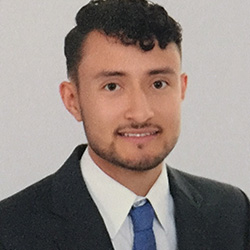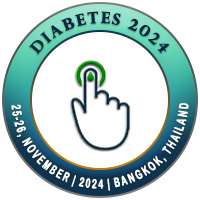
Burbano Camacho E
Universidad Militar Nueva Granada, ColombiaTitle: Risk factors for neonatal hypoglycemia transient in term patients, case study and controls in a hospital in Bogotá
Abstract
Introduction: Neonatal hypoglycemia is frequent and It can occur temporarily or persistently. exist different blood glucose cut-off points to be able to define it and are usually less than 47 mg/dL. have been evidenced both maternal and neonatal risk factors for developing this disease, which increase the risk of suffering from it between 14.7% and 83.2% compared to 5% compared to patients who do not have them. It has likewise been shown that the delay in the treatment of hypoglycemia generates alterations in neurodevelopment.
Objective: To determine the risk factors associated with Transient neonatal hypoglycemia of term newborns no risk factors determined by Academy guidance of American Pediatrics, at the Hospital Clínica Universitario San Rafael in the period from January 2015 to January 2019.
Methodology: Analytical, retrospective, case-control observational study, from January 2015 to January 2015. The sample calculation is carried out and 35 cases are obtained and 35 controls using the statistical software Real Statistics January 6.9, 2020.
Results: The highest proportion of patients in the study was female (61.43%), 20 cases and 23 controls. The average glucose on admission of the cases was 40.8 mg/dL. Overweight was found among the risk factors. maternal (OR 1.2), cesarean section (OR 2.5), induced hypertension due to pregnancy (OR 4.38). A signi?i cant association was found with Apgar at minute 5 (3 patients [8.57 %]); first energy input received from the newborn (25 [71.4%] were breastfed), transient tachypnea of ??the newborn
newborn (6 [17.14%]) and polycythemia (10 [28.57%]) as variables in the newborn and attachment time as a variable maternal (7 [20%]) in the cases that did not receive it.
Conclusions: In the term population considered healthy who develops transient neonatal hypoglycemia was found association with an Apgar score at 5 minutes, the first energy intake received, transient tachypnea of ??the newborn polycythemia and attachment as factors that influence its appearance. A call is made for greater surveillance of tthis group of newborns who, although presenting less incidence of hypoglycemia, they do need follow-up and monitoring
Biography
Eduardo Burbano Camacho is a pediatrician, pediatric endocrinologist from Autonomus University of Barcelona and currently master student in alternative medicine in Barcelona

